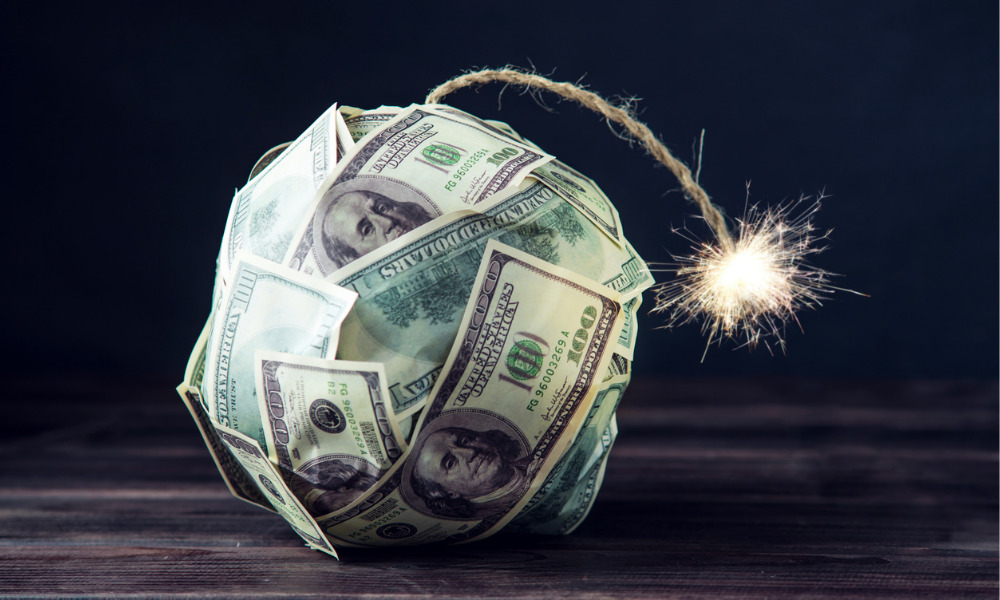Economist explains his focus on wages and housing, and why fears over the Great Resignation might be overblown

How do you solve a problem like inflation? For many policymakers and economists grappling with it today, kinks and disruptions across manufacturing, shipping, logistics, and distribution are the obvious root cause. But according to Bryce Gill, economist at First Trust, the situation isn’t that simple.
“Supply chains have been the big scapegoat here. That’s what get most of the focus with respect to inflation, and for good reason,” Gill says. “But I think a really big part of this is actually demand-driven.”
With scores of container ships waiting to dock off the coast of Los Angeles, labour crunches, and materials shortages, it’s no wonder the supply side of the economic equation is getting so much attention. But Gill notes that even as the U.S. economy is millions of jobs short compared to where it was pre-COVID, retail sales, personal income, and a raft of other demand-linked numbers are still booming.
“In the U.S. alone, we spent about $5 trillion on COVID stimulus. In inflation-adjusted terms, that’s about what we spent in all of World War II in the United States,” he says. “That’s a massive fiscal impulse. Demand is just running way ahead of supply.”
At the moment, Gill has his eye on wages, which continue to rise at an extremely rapid pace. Certain sectors are seeing historic wage growth; leisure and hospitality, the “poster child” for that phenomenon, has seen increases on the order of 15%, compared to the typical 2% or 3% seen in previous years. If those increases feed back into retail sales and consumer spending, he says, demand will keep expanding even as supply-side problems continue to hamstring economic activity.
Housing costs are also on his radar. He estimates that housing prices broadly have jumped 20% year-over-year, but the rise in the housing component of consumer price index has been closer to 4% or 5%. That gap, he says, exists because the CPI looks at rent, monthly expenditures on housing, and other variables to arrive at its estimate of housing costs, rather than directly using explicit housing costs.
“Housing costs are so important in CPI because it’s the largest single component of the index,” he says. “It makes up about 30% of the overall index, and 40% of the core index.”
That chunk of Americans’ household spending basket is set to spike, Gill says, because of the recent lifting of a moratorium of evictions from rental properties. Ever since that happened in September, the rental component of CPI has accelerated drastically, creating a real possibility that the housing component of CPI could soon rise to reflect the reality of soaring costs in residential properties.
“My worry is that housing costs, just because they're such a big part of the overall index, are putting a huge floor underneath inflation,” Gill says. “And because housing prices are sticky and not as volatile as food or energy prices, there’s almost no conceivable way that we could get back to a 2% [housing] inflation rate [if they surge]. I just don’t see how the math works out on that.”
As pandemic surges continue to wash over and disrupt the economy, some may be wondering whether the U.S. is in for a new era of stagflation. But Gill believes the country will go the other way.
“I’m personally more in the boomflation camp,” he says. “Usually, when you come out of a recession, there’s a protracted period where households pay off debt, businesses improve their balance sheets, and so on. This time around, people have amassed $3 trillion in excess savings, they’re paying down debt, and their wages are rising extremely rapidly.
“I can’t even think of a comparable period when consumers are in such good shape,” Gill says. “If there’s anything holding the economy back, it’s a lack of products on the shelves or cars on the lot to buy.”
One thing that could send the U.S. economy spiralling into stagflation, Gill says, would be the threat of the great resignation. Looking back to the 2008-2009 economic crisis, he recalls how a huge portion of the country’s labour force dropped out on a seemingly permanent basis. A repeat of that, he says, would only add to the supply-side problems businesses are faced with.
But from Gill’s perspective, the jobs situation isn’t as dire as it appears. The depression in the overall labour participation rate might paint a grey picture, but it also captures a large swath of older Americans that are choosing to retire early. Focusing on prime age labour participation, he says there’s been a fairly quick bounceback among the younger cohort of workers.
“I haven't seen any evidence yet that there's this huge permanent chunk of people that have dropped out of the labour force to never return,” he says. “But maybe it’s too early to say that’s an impossibility.”



